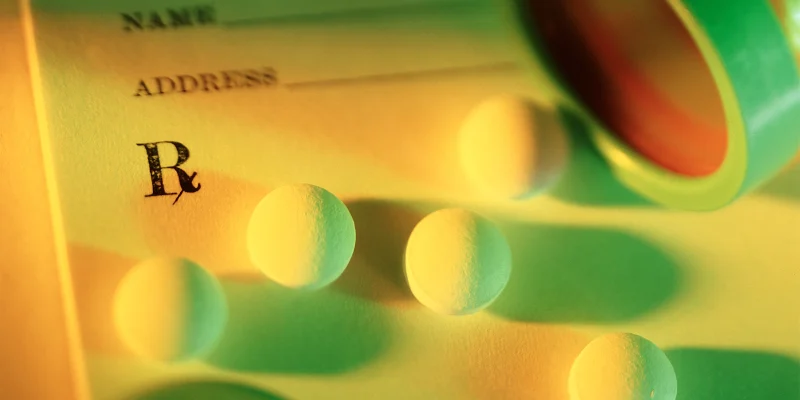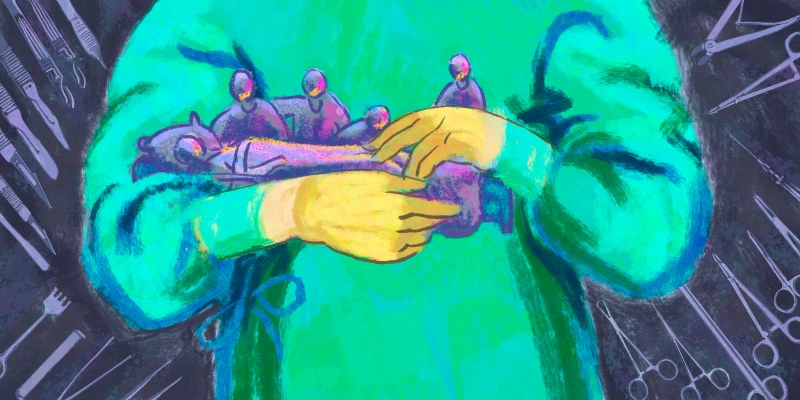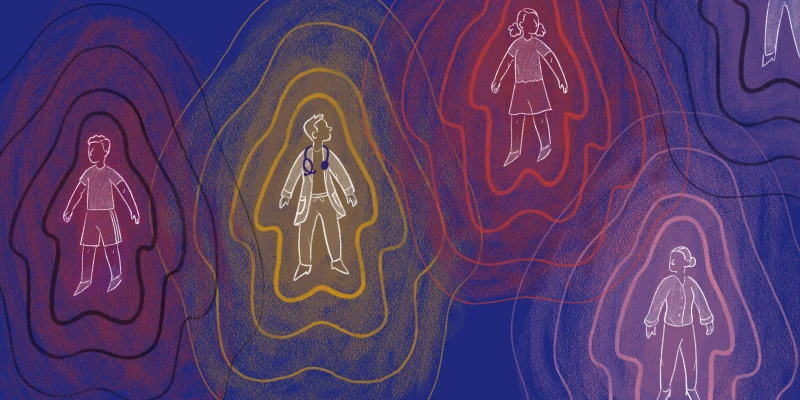“Code blue in the cath lab. Code blue in the cath lab.” These words and the events that ensued became a defining experience in my medical education. As I hurried into the cath lab, a sense of trepidation mingled with a strange excitement. This was my first encounter with a life-and-death situation outside of the controlled environment of a classroom. Little did I know that the next few minutes would leave an indelible mark on my understanding of medicine and mortality.
The room was crowded with people. Algorithmic orders were barked by the timekeeper. The attending physician orchestrated and delegated. The atmosphere felt intense, yet organized and calm. It was my turn. I stepped up on the stool and placed my sweaty palms with interlocked fingers on a patient whose heart had faltered during a routine procedure. “Go,” someone said.
The physicality of CPR was unlike anything I had imagined. As my hands pressed rhythmically against the patient’s chest, I was struck by the absence of familiar anatomical landmarks. Where I expected the sternum, I made contact with a soft abdomen-like chest. The previous rounds of resuscitation demolished the patient’s bony anatomy. CPR is violent. Each compression elicited a visceral response, as if I were engaged in a primal dance with death itself. Her lungs were hemorrhaging from repeated trauma and the resulting blood filled her ventilatory equipment with the evidence. I was surprised to learn how physically exhausting chest compressions were. My forehead became moist and my arms grew tired. I kept watch over the monitors to ensure I was delivering sufficient external force.
But amid the chaos, there were moments of eerie synchronicity. As my hands rose and fell in a relentless cadence, I noticed a curious phenomenon: The patient’s arms lifted in tandem with my activity. This was a haunting reminder of the connection between body and soul, and a testament to the resilience of the human spirit in the face of its own mortality. The transient increase in oxygen delivered between compressions was enough for the dying brain tissue to organize a few last executive functions — as if it were her body’s last attempt, her last goodbye, her materialized humanity waning in the shadows of oblivion.
When I stepped down, I was shaking. The world around me became quiet. The patient was deemed nonviable, and the efforts were stopped. I was the last to go. The commotion stopped and the energy around the patient dissipated. As I stole a final glance at the lifeless form before me, I reflected on the fragile balance between life and death, and the immutable cycles that govern our existence. I thought of her family who was in the room next door, already informed. The moment was painted with sadness, but also profound meaning. I felt more alive than ever; I felt human.
In the days and weeks that followed, I found myself confronting my own humanity, acknowledging the ephemeral nature of existence and the strange beauty that lies in its transience. As I contemplated what it means to be dead, I was strangely reminded of my five-month-old son’s newfound laughter. Like the ultimate balancing act of nature, I saw my son’s expanding awareness as a metaphorical exchange for the patient’s consciousness as she faded from this domain. Her smile was taken by death. My son’s smile is given by life, reciprocated from the stimulus of the world around him — the same world that will one day take his smile, and mine.
I will forever remember the words “Code Blue” and my first time performing CPR as important lessons on nature’s cyclical patterns, the inherent fragility of life, and the beauty that exists between the blurry lines of life and death.
What do you remember about your first time performing CPR? Share in the comments.
Austin Swisher is a fourth-year medical student who will be completing residency in Otolaryngology-Head and Neck Surgery.
Illustration by Jennifer Bogartz







